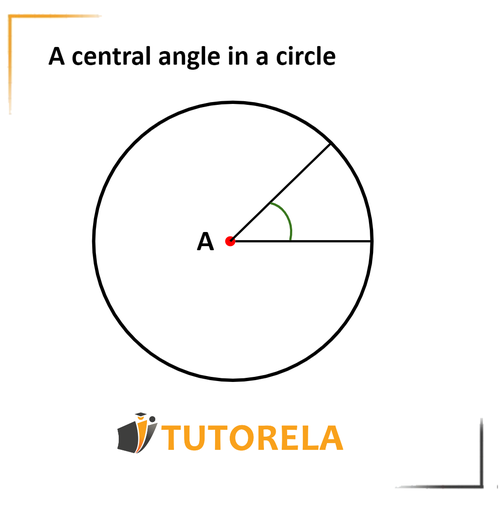We are here to define what a central angle in a circle is and give you tips to remember its definition and properties in the best and most logical way.
Before talking about the central angle in a circle, let's take a moment to look at its name - a central angle.
Through its name, we can recognize that it has some connection with the center of the circle.
Great, now let's move on to the definition of a central angle and it will make much more sense to us.
